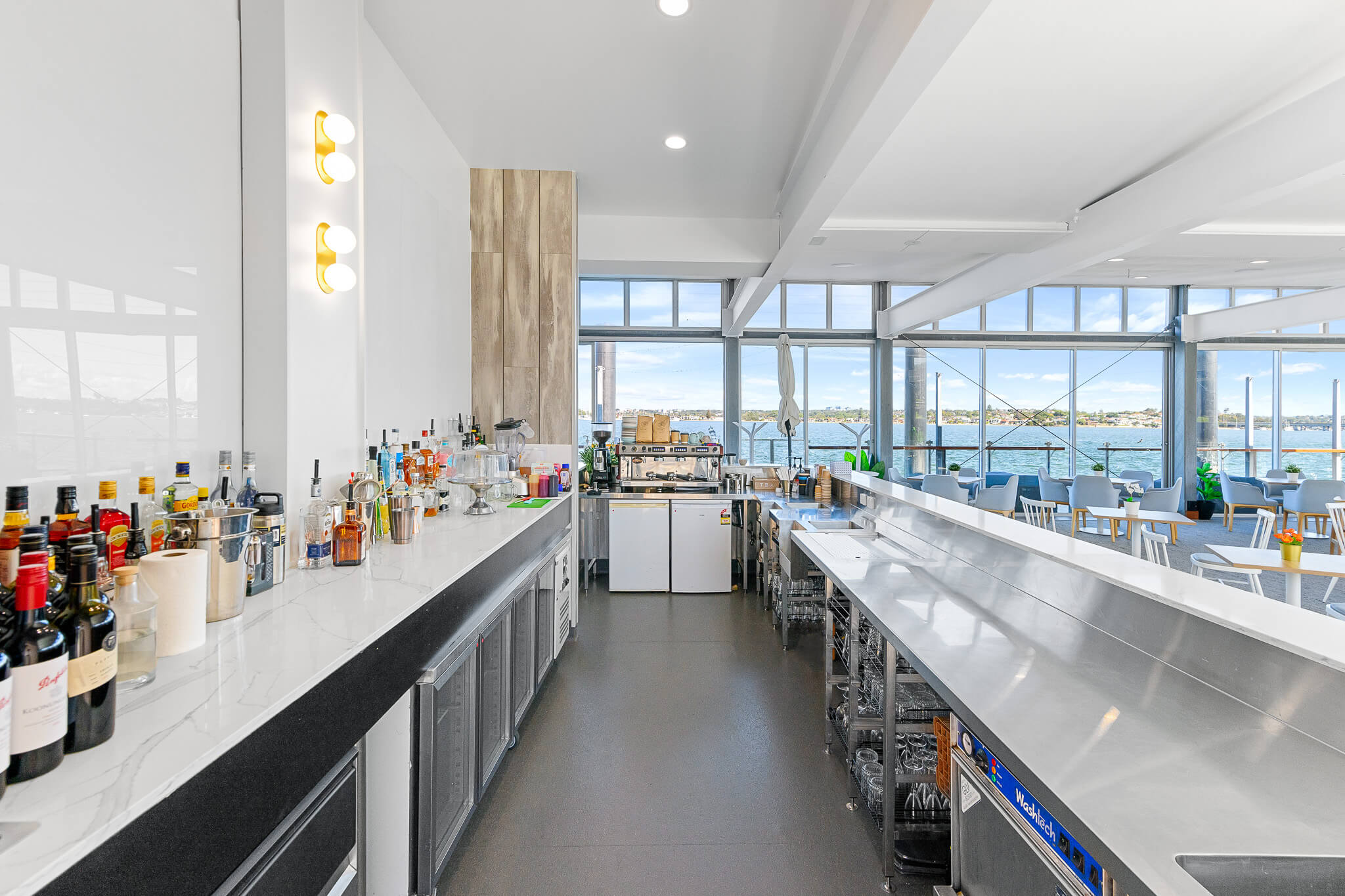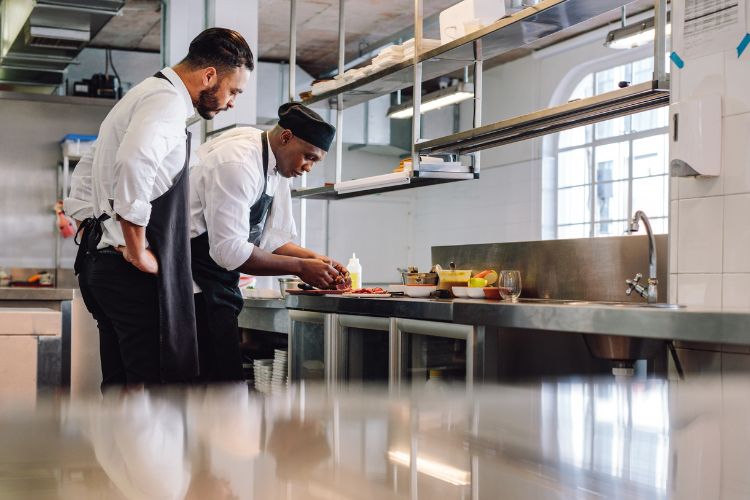If you’re looking to spruce up your commercial kitchen or create a whole new layout, you’ll need to consider which materials will best suit your needs. You may have heard of both stainless steel and stainless steel finishes, but the question you’re here to answer is, what’s the difference? Are they both equal, or is one option the superior choice?
Let’s take a look at stainless steel fabrications and surface-level alternatives. We’ll provide a brief rundown of each option, exploring both pros and cons, and then provide you with the information to make the right choice for your business.

Stainless Steel: A Foundation of Strength
Stainless steel is the material of choice for commercial kitchens, restaurants, catering companies and bars around the world and for good reason! Its composition, primarily featuring iron, chromium, nickel, and other alloys, grants it the exceptional ability to resist corrosion and maintain a sleek appearance over time. Whether you’re looking for a benchtop, sinks, kitchen benches, catering equipment, shelves or an entire kitchen layout, stainless steel is the ideal option for your commercial endeavour.

Common Uses of Stainless Steel
Stainless steel is used for a wide range of purposes, from construction to kitchen equipment and appliances. Some of the most common uses for stainless steel fabrication include kitchen benches, ventilation, benchtops, marine equipment, sinks, shelving, workbenches, cabinets and more. Stainless steel is a versatile material that is fantastic for custom design, meaning you can create the perfect layout to suit your kitchen space.
Pros of Stainless Steel
- Durability: Stainless steel is resistant to corrosion, rust and staining, holds up to both high and low temperatures, and can withstand high impacts. With proper maintenance, your stainless steel products should last for decades.
- Low Maintenance: Cleaning is as vital in the kitchen as cooking, and stainless steel meets all health and safety standards. Its non-porous surface makes for easy, quick cleaning, removing fingerprints, marks, germs and bacteria.
- Versatility: Stainless steel can be used to make a wide range of durable products that will suit any environment. Whether you run a local fish and chip shop or a high-end restaurant, stainless steel is the only choice for kitchen equipment.
- Sleek Appearance: Gives a timeless and polished look, elevating the aesthetics of any space, from hip, modern clubs to traditional family restaurants.
- Hygenic: The importance of hygiene in a commercial kitchen can’t be overstated. Stainless steel is antibacterial and easy to clean, making it the industry standard for kitchen equipment.
Cons of Stainless Steel:
- Initial Cost: Stainless steel can be more expensive due to the quality of the materials. However, you’ll likely save money in the long run, due to low maintenance requirements and long lifespan.
- Scratching: While durable, stainless steel surfaces can show scratches. By following a few simple cleaning steps, you should be able to avoid any damage.
Stainless Steel Finishes: Elevating Aesthetic Possibilities
One of the alternatives to stainless steel is surface-level stainless steel finishes. Stainless steel finishes offer a myriad of textures and appearances; for example, shiny, matte, and brushed. Unlike solid stainless steel, these finishes involve applying a thin layer of stainless steel onto another material, providing a cost-effective alternative.

Common Uses of Stainless Steel Finishes
Stainless steel finishes are popular in furniture, architectural detailing, and appliances where a polished aesthetic is desired without the cost of solid stainless steel. While these may provide some stylistic benefits, stainless steel finishes won’t provide the same functionality and advantages that come with a stainless steel fabrication.
Pros of Stainless Steel Finishes
- Cost-Effective: A cheaper alternative that provides the illusion of stainless steel. Provides a more affordable option in the short term.
- Customisation: There are a variety of options and types of finishes that can suit a wide range of aesthetics.
- Adaptability: Can be applied to various materials, providing flexibility in design. For example, it can be applied to a pre-existing bench or other product to give it a stainless steel look.
Cons of Stainless Steel Finishes
- Durability Concerns: Won’t have the same level of durability as solid stainless steel products. This can mean a shorter lifespan and increased maintenance concerns.
- Limited Resistance: Lacks the same level of corrosion-resistant quality as stainless steel. Also, it is more vulnerable to damage and scratches.

Balancing Form and Function
When it comes to durability, functionality and appearance, it’s hard to go past stainless steel. It is the material of choice for commercial kitchens, bars and catering services. It is low maintenance, has a long lifespan, is hygienic and can be custom-made into a variety of equipment and products.
To discuss the perfect solution for your project, contact Martin Stainless Steel. Our expert team has years of experience crafting stainless steel products, from individual benches to designing and installing kitchen layouts. We’ve completed a wide range of projects and are confident we’ve got the solution to your business needs.
To find out how we can take your kitchen to the next level, get in touch today!
